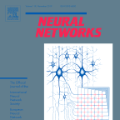Motivated by applications such as on-device collaborative neural network inference, this work investigates edge-facilitated collaborative fog computing - in which edge-devices collaborate with each other and with the edge of the network to complete a processing task - to augment the computing capabilities of individual edge-devices while optimizing the collaboration for energy-efficiency. Collaborative computing is modeled using the Map-Reduce distributed computing framework, consisting in two rounds of computations separated by a communication phase. The computing load is optimally distributed among the edge-devices, taking into account their diversity in term of computing and communications capabilities. In addition, edge-devices local parameters such as CPU clock frequency and RF transmit power are also optimized for energy-efficiency. The corresponding optimization problem can be shown to be convex and optimality conditions can be obtained through Lagrange duality theory. A waterfilling-like interpretation for the size of the computing load assigned to each edge-device is given. Numerical experiments demonstrate the benefits of the proposed optimal collaborative-computing scheme over various other schemes in several respects. Most notably, the proposed scheme exhibits increased probability of successfully dealing with heavier computations and/or smaller latency along with energy-efficiency gains of up to two orders of magnitude. Both improvements come from the scheme ability to optimally leverage edge-devices diversity.
翻译:这项工作受到各种应用的驱动,如在设备上合作神经网络的推断,对边缘辅助协作雾计算(其中边缘装置相互协作,并与网络边缘合作完成处理任务)进行调查,以提高各个边缘装置的计算能力,同时优化能效合作。协作计算采用地图-REduce分布式计算框架模型,包括两轮由通信阶段分离的计算。计算负荷在边缘装置之间最理想地分配,同时考虑到其在计算和通信能力方面的多样性。此外,边缘装置,例如中央计算机时钟频率和RF传输电力等本地参数,也为能源效率提供了最佳的处理任务。相应的优化问题可以通过Lagrange双轨理论来证明是相互连接的,最佳计算条件可以通过Lagrange 双轨理论获得。对分配给每个边缘装置的计算负荷规模作出类似水的诠释。数字实验显示,考虑到这些设备在计算和通信能力方面的多样性。此外,边缘装置(例如CPU时钟频率和RF传输电力的传输能力)等局部参数也是最佳的优化。最显著的是,拟议的优化优化优化方案在两个方面成功地利用更高级的变速率方法进行更高级的升级。




